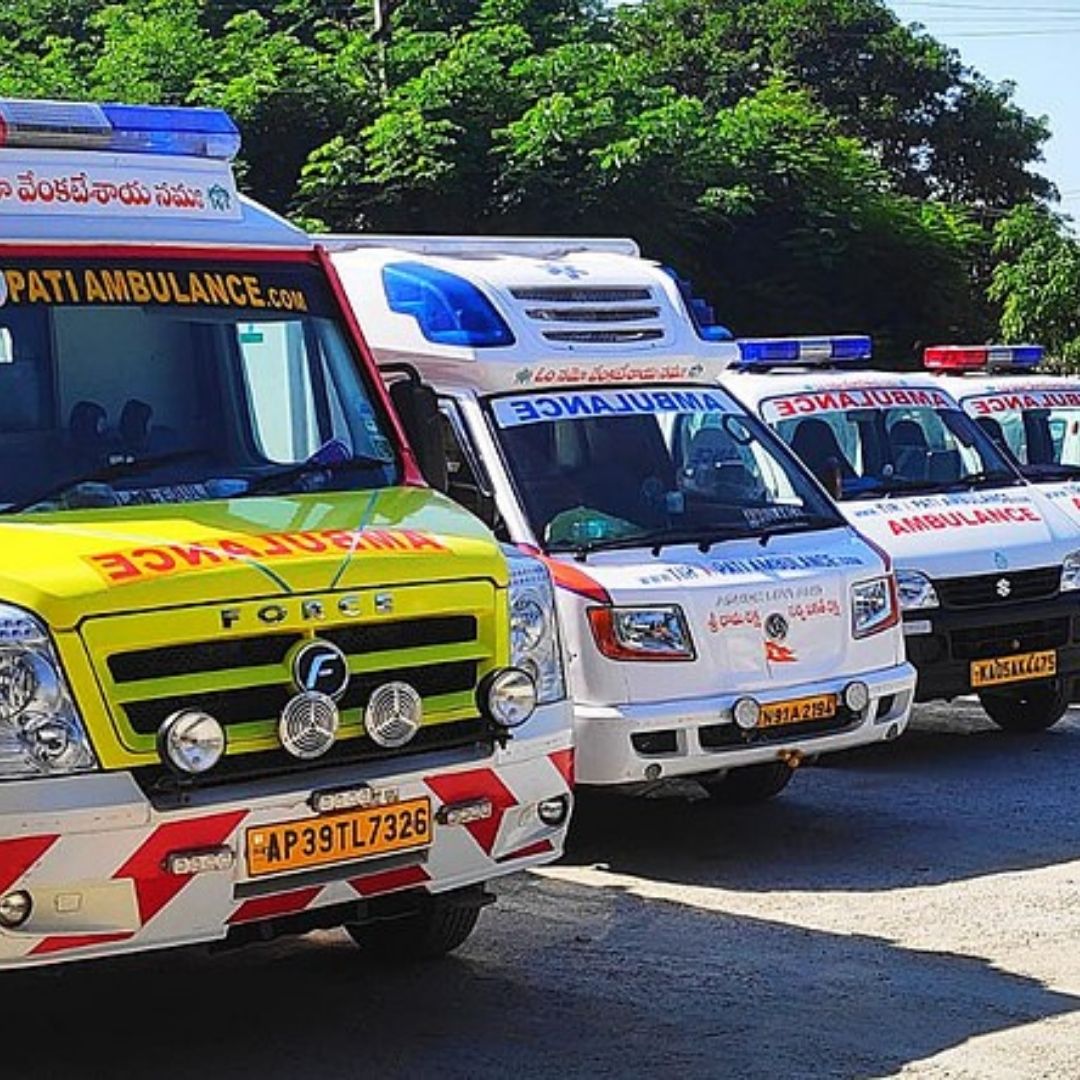
Image Credits: Wikipedia
Saviour In Life And Death! Looking Back At The History Of Ambulance Services In India
India, 29 March 2022 5:22 AM GMT
Editor : Snehadri Sarkar |
While he is a massive sports fanatic, his interest also lies in mainstream news and nitpicking trending and less talked about everyday issues.
Creatives : Tashafi Nazir
For most people, journalism sounds hectic and chaotic. For her, it's a passion she has been chasing for years. With an extensive media background, Tashafi believes in putting efforts on presenting a simple incident in the most interesting way.
In India, earlier ambulance services were dependent on hospitals, charities or municipalities. No separate departments or companies were dealing in ambulance services. Over the years, several government and private organisations have come forward to fulfil the need.
Ambulances have become an integral part of our daily lives as they play an essential role in conjoining the patient with a medical care centre. The ambulance services aim to either transport patients who need urgent medical care, ensure a satisfactory treatment of the affliction, or arrange for a timely patient evacuation to the next point of final care. It is needless to say that a person is more relaxed when fighting a long ailment with a good ambulance service. While visiting the doctor regularly, having a trustworthy ambulance service gives a sigh of relief to the patient. During the prevention and containment of the COVID-19 pandemic, ambulances played an essential role in transporting infectious patients.
It took years to reach the current standards of ambulances and it's been a long, exciting journey. They have walked step-by-step along with the technology to achieve this progress. Although there is a lack of detailed documentation when exactly ambulance services started in India, they gradually stabilised in the country.
History Of Ambulances In India
The history of the ambulance began in ancient times, with the use of carts to transport patients. Ambulances were first used for emergency transport in 1487 by the Spanish forces during the siege of Malaga by the Catholic monarchs against the Emirate of Granada, and civilian variants were put into operation in the 1830s. Advances in technology throughout the 19th and 20th centuries led to modern self-powered ambulances.
In India, earlier ambulance services were dependent on hospitals, charities or municipalities. No separate departments or companies were dealing in ambulance services. Over the years, several government and private organisations have come forward to fulfil the need. Several NGOs also provide ambulances as a service to humanity, and some are solely dedicated to availing the ambulance services in the country.
Although detailed history of the Indian Ambulances is not well documented, the National Health Mission (NHM) set up by the government in 2005 introduced significant developments in the emergency health care scenario in the country. Not only there is Basic Life Support (BLS) and Advanced Life Support (ALS) equipment available, but through the 108 ambulances, the government has striven to also modernise emergency services in terms of communication and speed with which they can be accessed. The 108 ambulance services use GPS technology to identify the nearest hospital to which the patient can be transported. The ambulances also have paramedics on board who are trained to administer emergency medicines in the patient's body while being transferred to the hospital. The police and the doctor can be connected via the teleoperator in case of any complications in the patient's medical condition.
Emergency Medical Services
Thus, India has come a long way from hammocks, bullock carts, horses to GPS locating telephonic ambulance services. Emergency medical services are crucial and need to be extended to the urban and the rural population. In partnership with various organisations, the government has taken multiple steps and focused its efforts on rural locations to bridge the widening gap in emergency medical services in the country.
According to ambulance service AmbiPalm, the first notable change took place in Mumbai, around the mid-80s. Later, it was spread through other significant parts of the country. An allegedly unprecedented step happened in 1991 when the services started focusing on a systematic run and got named Centralised Accident & Trauma Services (CATS). CATS continued to be the most crucial aspect of India's Emergency Medical Services (EMS) and complemented it in dealing with emergency medical situations across the country.
Dial-108 Ambulance Services
In August 2005, it took an extreme change when a corporate leader Ramalinga Raju brought dial-108 ambulance services. It introduced sustainability to the services and changed how ambulance services worked in India. The idea behind dial-108 was to get all the three major emergency services connectivity through one number. There are separate numbers for police, fire, and ambulance services 100, 101 and 102, respectively, but that could confuse people during an emergency which number they should dial. After the initiation of 108, it is now more accessible for people to remember only one number that integrates all the emergency services. It is a collaboration between the government and the private organisations actively working in 18 states and two union territories.
After collecting the needed information, it works as a mediator and connects the caller with the concerned department. With the assistance of the government hospitals and private ambulance aggregators, the patient is transported to the nearest hospital. The dial-108 service has subsided the issues while calling for emergency service.
The history of ambulances lies in Europe around the 10th or 11th century, which emerged as a prominent part during World War when it was used to carry injured soldiers. Later, it was shifted to bullock carts and then wheels. In India, the emergence of a proper ambulance service was initially an inheritance of other developed nations, however, it has now propelled a trustworthy system. With National Ambulance Service 102, Emergency Medical Service 108 and other organisations, the ambulance services in India are improving with time.
Also Read: Meet Dakshayani, Tamil Nadu's First-Ever Transwoman Panchayat Secretary
 All section
All section














